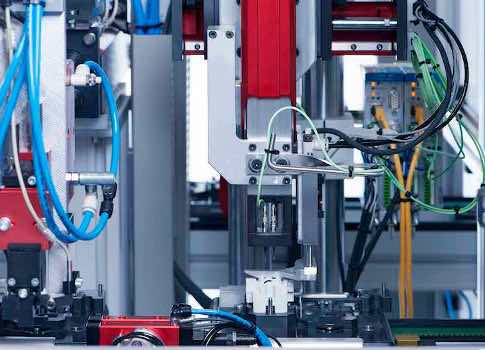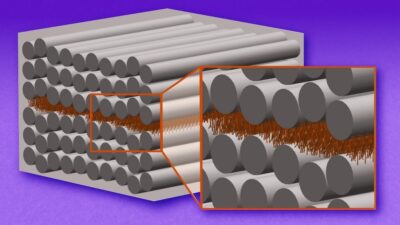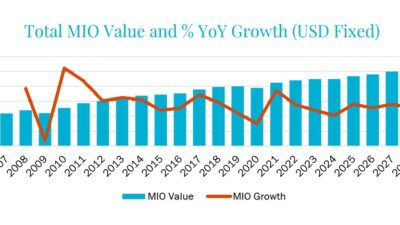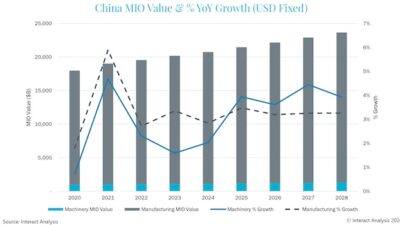Piezoelectric sensors have many benefits and are among the key technologies that determine business success for industrial manufacturers.

Measurement technology based on the piezoelectric principle delivers a remarkable increase in process reliability within a company’s production chain, coupled with a sustained improvement in productivity—opening up the way to zero defect production in joining, assembly, and testing.
The piezoelectric effect
Piezoelectric measurement technology optimizes and controls production processes by measuring force, pressure, acceleration, and torque. When a mechanical load is applied to the quartz crystal used in the sensor technology, the crystal generates a charge signal that is directly proportional to the force acting on it. What is the benefit? Due to the high rigidity of the crystal, the measuring deflection is low-usually within the range of a few micrometers. When the tested processes are fast and dynamic, the high natural frequency of the quartz proves to be an advantage. Various piezoelectric effects are differentiated according to the position of the polar crystal axes in relation to the acting force:
Shear effect: Similarly to the longitudinal effect, the piezoelectric sensitivity involved in the shear effect is independent of the size and shape of the piezoelectric element. Shear-sensitive piezoelectric elements are used for sensors that measure shear forces, torque and strain, and also for accelerometers. They are suitable for use in sensors that behave excellently even in case of temperature changes.
Charge amplifiers convert the charge produced by a piezoelectric sensor into a proportional voltage. The amplifier acts as an integrator, constantly compensating the electrical charge produced by the sensor on the range capacitor, in proportion to the acting amplifier.
Quartz sensors allow both direct and indirect force measurements. For direct measurements, the sensor is positioned fully in the force flux, and it measures the entire force. This approach yields high measurement accuracy that is virtually independent of the force application point. If the sensor cannot be positioned directly in the force flux, it will only measure part of the force; the remainder passes through the structure in which it is mounted. (This is known as the force shunt.) With indirect force measurement, strain sensors are used to measure the process force indirectly via the structural strain. Quartz sensors are exceptionally stable, rugged, and compact. These attributes account for their widespread use in research and development as well as production and industrial testing technology.
Benefits of piezo sensors
Measurements with piezoelectric quartz force sensors deliver benefits for dynamic and quasi-static measurements. For example, a dynamic force measurement is required for aging and load investigations for automotive components. The quartz force sensors consist of active sensor elements that generate a linear charge signal at the output, proportional to the acting force. This means that they can be used for multiple measuring ranges, because the force is measured directly via the sensor elements rather than indirectly through the deformation of a structure. This feature explains why these measuring elements can measure across several decades, with no need to exchange them when measuring different forces.
Another benefit piezoelectric sensors have for overload protection is that piezoelectric quartz force sensors react to load, not strain. This means that virtually no displacement occurs during the measurement. The pressure resistance of most sensors is 3.0 x 108 Pa, so massive overloading is possible without the risk of pressure-induced destruction. Even if the sensor is overloaded beyond its permitted measuring range, no damage will occur, and there will be no zero point offsets, fatigue, or linearity changes.
Piezoelectric sensors also offer added value in terms of stable sensitivity. Quartz force sensors feature a solid-state design, and quartz does not exhibit any signs of aging. Quartz elements are not displaced under load, so sensitivity changes are unlikely-eliminating the need for frequent calibrations. These advantages save time and money.
Dimensions are often a critical factor in the choice of a force sensor. In this regard, piezoelectric quartz force sensors have the advantage. They require minimal space, so the mass load they add in dynamic investigations is negligible.
Other advantages of piezoelectric quartz technology include high output voltages (5 or 10 V with an output that generates an electrical output proportional to applied acceleration) and wide temperature ranges (-73 to 204 C/-99 to 399 F), as well as low acquisition and lifecycle costs. For certain applications, quartz force sensors offer a variety of technical benefits with the advantage of major cost reductions.
Quality assurance
So the data captured by highly sensitive piezoelectric sensors can be used, it is visualized, evaluated, and documented in suitable monitoring systems. Systems of this sort have to be integrated into production so the quality of the manufactured products can be verified and/or assessed. Especially if many individual components are assembled to form one product, each component must already be tested by the suppliers. This is the only way to guarantee the quality of the end product. In assembly technology, for example, monitoring systems can reliably track the production process. The result: production can be optimized toward the goal of zero-defect production, and at the same time, cost efficiency is maximized.
Stefan Schäfer is the product manager in the production monitoring business field at KistlerInstrumente AG in Winterthur (Switzerland). Edited by Emily Guenther, associate content manager, Control Engineering, CFE Media, [email protected].
Key Concepts
- The benefits of piezoelectric sensors
- How piezoelectric technology optimizes and increases process reliability
- Piezoelectric quartz technology’s cost savings for industrial manufacturers.
Consider this
What kind of monitoring systems are necessary to extract the data from piezoelectric sensors?
ONLINE extra
The piezoelectric effect was discovered by Pierre and Jacques Curie in 1880. In 1950, Walter P. Kistler patented the charge amplifier for piezoelectric signals, paving the way for the exploitation of an effect that had been known for decades.



